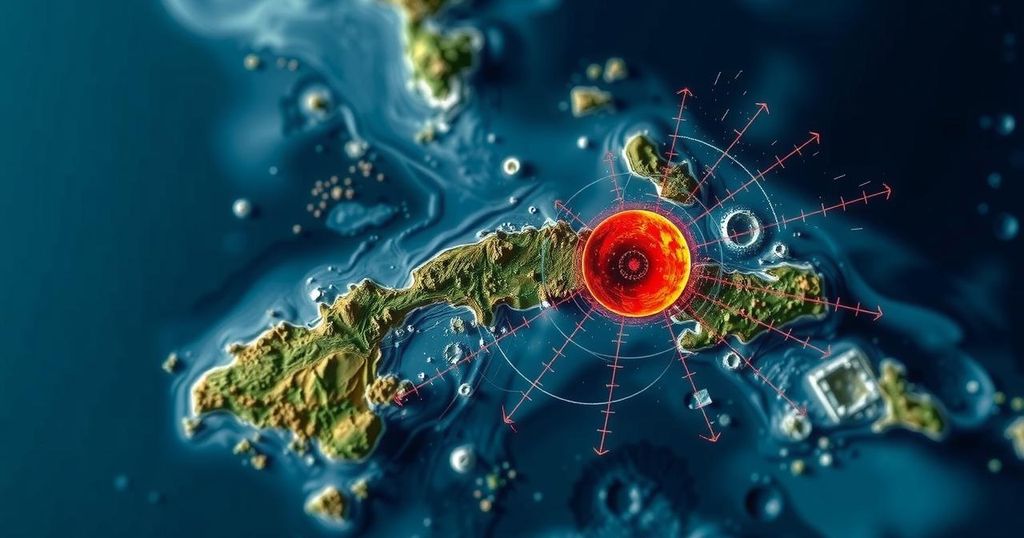On Sunday, a 6.8 magnitude earthquake struck eastern Cuba, particularly affecting Santiago de Cuba and nearby regions. While residents reported significant shaking and some property damage in Pilón, there were no immediate reports of serious injuries. The quake occurred within an active seismic zone, and authorities reported no tsunami threat. This event adds to the series of recent natural disasters impacting the island, including hurricanes that have disrupted power and recovery efforts.
A powerful earthquake measuring 6.8 on the Richter scale struck eastern Cuba, shaking buildings in Santiago de Cuba and surrounding regions, as reported by the US Geological Survey. The earthquake, which occurred in Granma province near Bartolomé Masó, caused significant alarm among residents, many of whom described the tremors as the strongest they had ever experienced. Reports of damage were noted in Pilón, close to the epicenter, where older structures proved particularly vulnerable to the quake’s intensity. Following the quake, Yolanda Tabío, a 76-year-old Santiago resident, recounted the chaos, stating that many fled to the streets and nervously perched in their doorways. “You had to see how everything was moving, the walls, everything,” she remarked. Fortunately, while she felt two aftershocks, she had not learned of any substantial damages among her acquaintances. The USGS provided additional details, indicating that the quake occurred at a depth of 14 kilometers and had initially been recorded as a 5.8 magnitude before upward revision. Fortunately, the US National Tsunami Warning Center clarified that there was no associated tsunami threat. This earthquake marks the latest in a series of natural calamities affecting Cuba, following the devastation caused by Hurricane Oscar in October and a recent power grid collapse due to Hurricane Rafael. Recovery efforts remain ongoing, hindered by the rolling blackouts that typically plague eastern Cuba, and this has made communication particularly challenging. Notably, seismic activity in Cuba is concentrated around Santiago, where a fault line delineates the boundary between the North American and Caribbean tectonic plates. The capital, Havana, experienced no impact from this earthquake.
Cuba is geographically situated along a seismically active region due to the tectonic boundary between the North American and Caribbean plates. Historically, the eastern parts of the island have been prone to significant seismic events. The nation has also faced a series of natural disasters recently, including hurricanes that have exacerbated existing vulnerabilities, particularly in aging infrastructure. The situation is further complicated by power outages and recovery challenges following these catastrophic events, highlighting the need for improved preparedness and response strategies.
In summary, the 6.8 magnitude earthquake that struck eastern Cuba has left residents shaken and has exposed the vulnerabilities of the region’s infrastructure. Despite some initial reports of damage, there have been no significant injuries reported. Ongoing recovery efforts from past hurricanes add to the complexity of the situation. Authorities remain vigilant, monitoring aftershocks and ensuring that the populace is informed and safe moving forward.
Original Source: www.northweststar.com.au






